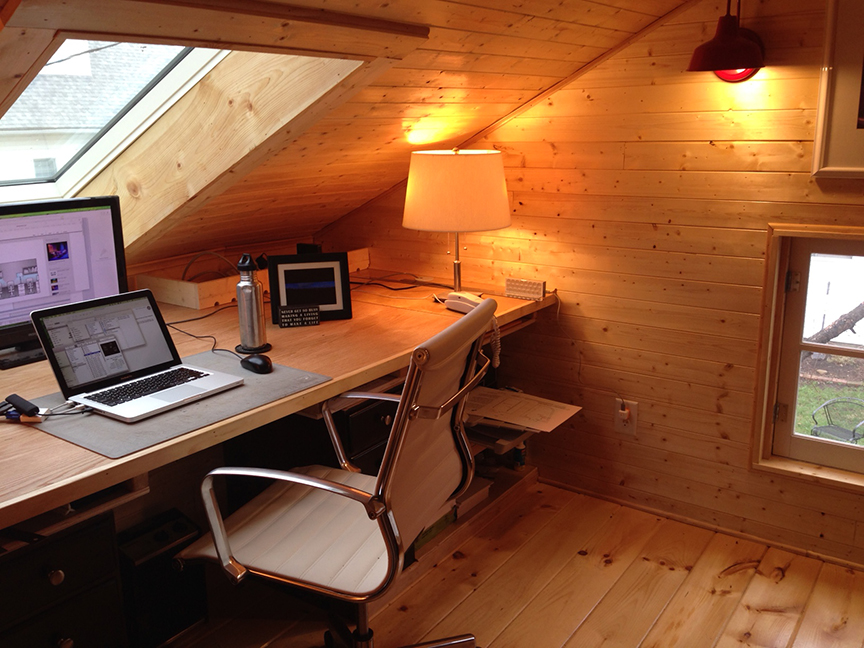Do you know how many footcandles you need to read a magazine? Most likely not, and there is no reason you should. But you are an expert at what you do in your home, and you need light to see it. You need a certain kind of light to read your magazine, light that illuminates the page without causing glare on the glossy paper. You need a certain kind of light to chop vegetables in the kitchen, a certain kind of light to comb your hair in the mirror, a certain kind of light to find a book on the shelves. This is light for doing, and it is the most basic of our needs.
When we buy a light bulb or a light fixture today, the most prominent feature quoted is often the “lumen output,” a measurement of light coming out of the fixture. We assume that a certain number of lumens must be enough for us, or we get more lumens because we cannot see our counters well enough. Unfortunately, lumen output tells us almost nothing about whether the light is going to provide what we need for chopping vegetables.
We would be better off, especially in conversation with our architect or builder, from staying away entirely from technical terms like lumen and sticking to what we do know. Asking a professional for light for doing specific tasks has a much higher likelihood of getting you what you need. “I need light for doing crossword puzzles,” or “I need light for doing food prep on the kitchen counter” is going get to the heart of the matter faster, and eliminates the confusion of technical terminology.

Ask yourself where light is needed and how detailed is your task.
Where is light needed?
This seems like an obvious question, but I am amazed at how often homes are lit with light in exactly the wrong place. Light in the middle of a living room does very little to provide adequate reading light where the readers usually sit. And light in the middle of a bedroom is helpful while making the bed but for little else. Moving these light sources to places that better suit light for doing goes a long, long way towards improving your lighting. This method can reduce the amount of energy used, but I think it is even more critical in allowing some parts of rooms to be darker than others, which allows our eyes to rest.
How detailed is the task?
Forget the pages and pages of tables professionals use and ask yourself just one question: how detailed is the activity you are doing? Knitting, scrapbooking, and doing small electronics projects qualify as highly detailed work and, in general, these types of task need more light. Other activities are less detailed- like vacuuming the floor, playing cards, or watching a movie. The less detail, the less light is needed. Knowing that basic information can help us with lighting our homes: we’ll need more light on our kitchen counters than on the hallway floor.
In the coming weeks I’ll post examples of how to apply light for doing to both a living room and kitchen. But keep in mind that simply adding appropriate layers of light for tasks likely will not be enough to make a room feel comfortable or adapt to changes. Just like Red Velvet Cake, there are more layers needed.
